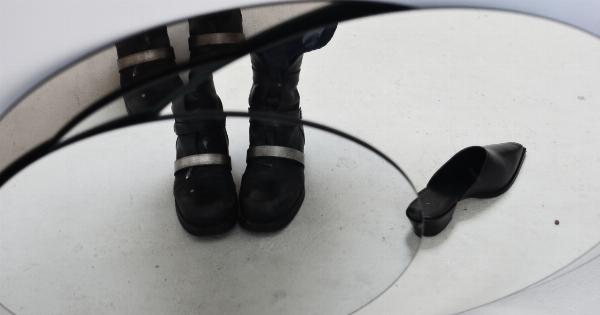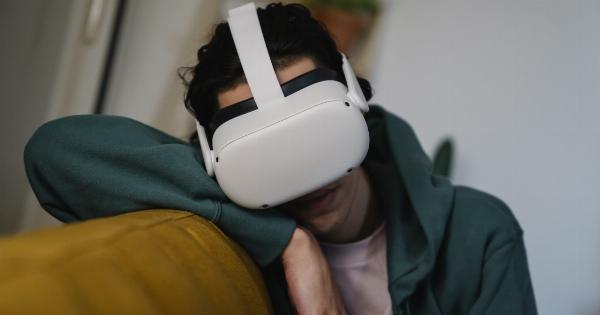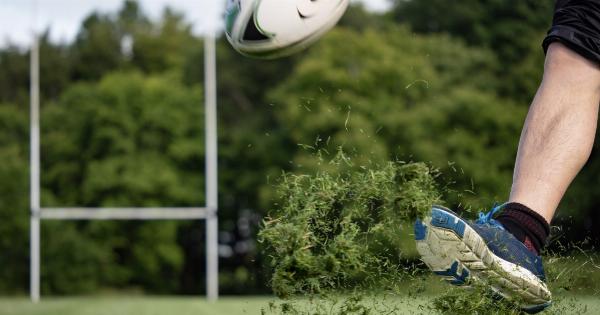Walking barefoot, also known as barefoot walking or barefooting, is the act of walking without any footwear.
While this may seem unconventional in today’s shoe-centric society, walking barefoot has been practiced by various cultures throughout history and is gaining popularity as a natural and healthy way to move.
The Benefits of Walking Barefoot
Walking barefoot offers a range of benefits for both physical and mental health. Here are some of the key advantages:.
1. Improved Balance and Proprioception
Walking barefoot allows your feet to directly interact with the environment, which enhances your balance and proprioception. Proprioception refers to your body’s ability to sense its position, movement, and forces acting upon it.
When you walk barefoot, the sensory receptors on the soles of your feet send feedback to your brain, improving the overall coordination and stability of your body.
2. Strengthening of Foot Muscles
Regular shoe-wearing can weaken the muscles of your feet. By walking barefoot, you engage the small intrinsic muscles of your feet, which are often neglected when wearing shoes.
This helps in strengthening these muscles, leading to better foot arch support and overall foot health.
3. Enhanced Circulation
Walking barefoot stimulates the nerve endings in your feet and increases blood flow. This improved circulation benefits your entire body, promoting better cardiovascular health and nutrient delivery to various tissues and organs.
4. Natural Shock Absorption
When walking barefoot, your body’s natural shock absorption mechanisms come into play. The arches of your feet, along with the muscles and tendons, act as shock absorbers, cushioning the impact of each step.
This can help reduce the stress on your joints, particularly in your ankles, knees, and hips.
5. Connection with Nature
Walking barefoot allows you to connect with the natural elements beneath your feet, such as grass, sand, or soil. This grounding experience can have a calming effect on your mind and help reduce stress and anxiety.
It also offers an opportunity to appreciate and engage with the beauty of nature.
6. Free Foot Massage
Walking barefoot provides a natural foot massage as you navigate various surfaces. The textures and temperatures encountered stimulate nerve endings and acupressure points, contributing to relaxation and improved overall well-being.
7. Increased Sensory Stimulation
Your feet have numerous nerve endings that continuously receive sensory input. By walking barefoot, you encourage the activation and stimulation of these nerves, which can heighten sensory awareness and mindfulness.
This increased sensory stimulation can also be beneficial for individuals with certain neurological conditions.
8. Cost-Effective and Environmentally Friendly
Walking barefoot eliminates the need for purchasing expensive shoes and the associated maintenance costs. Additionally, it reduces the environmental impact associated with the production and disposal of footwear.
Precautions and Considerations
While walking barefoot is generally safe and beneficial, there are certain precautions and considerations to keep in mind:.
1. Gradual Transition
If you are not accustomed to walking barefoot, it is advisable to ease into it gradually. Start by spending short periods barefoot indoors and gradually increase the duration and intensity of your barefoot activities.
This allows your feet and muscles to adapt gradually, reducing the risk of injury.
2. Watch Out for Hazards
When walking barefoot outdoors, be mindful of potential hazards such as sharp objects, hot surfaces, or rough terrain. Always scan the ground ahead to avoid stepping on anything that may cause injury.
3. Consider Arch Support
Individuals with flat feet or other foot conditions may require additional arch support. In such cases, consulting a podiatrist or wearing minimalist shoes with arch support can be beneficial.
4. Hygiene Maintenance
Regularly clean and moisturize your feet to maintain good foot hygiene and prevent any potential infections. This is particularly important if you frequently walk barefoot in public places.
5. Listen to Your Body
Pay attention to any signs of discomfort or pain while walking barefoot. If you experience any persistent pain or symptoms, consult a healthcare professional for proper evaluation and guidance.
Conclusion
Walking barefoot can be a transformative experience that reconnects you with your body and the natural world.
By reaping the benefits of improved balance, stronger foot muscles, enhanced circulation, and a greater sense of connection, you can enhance your overall well-being. Embrace the freedom and joys of walking barefoot while taking appropriate precautions to ensure a safe and enjoyable experience.




























